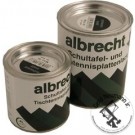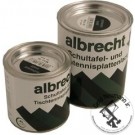- Astronomik Lunar calendar for 2024
The Astronomik calendar of the Lunar phases in 2024 is ready.
- Chistmastime and New Year 2023-2024
We wish you a merry Chirstmastime and a happy and healthy 2024...
- Astronomik Lunar calendar for 2023
The Astronomik calendar of the Lunar phases in 2023 is ready.
- Chistmastime and New Year 2022-2023
We wish you a merry Chirstmastime and a happy and healthy 2023...
- Shipping methods
Shipping as registred good shipment is no longer available
- How to observe planetary nebulae
A very nice introduction to observing planetary nebulas written by Owen Brazell
- Astronomik Lunar calendar for 2022
The Astronomik calendar of the Lunar phases in 2022 is ready.
- Website down
Our website was down on dec 20st...
- H-alpha imaging with a unmodified EOS R
Imaging with an unmodified camera using a H-alpha filter
- Astronomik Lunar calendar for 2021
The Astronomik calendar of the Lunar phases in 2021 is ready.
Deep-black optical paint

An essential aspect of good telescope design is to minimize any stray light in the light path and in the focal plane. A closed tube and carefully constructed baffles are crucial. However, to absorb the last stray of photons, all interior sides and edges should be thoroughly blackened. Standard matt black paint is hardly suited to this task: At shallow angles of light incidence, as they are typical of the telescope tube, a standard "matt" finish is in fact still far too glossy.
Instead, deep-black chalkboard paint can be used to blacken the interior of your telescope tube, the interior of parts or accessories and the sides of prisms and lenses effectively. This chalkboard paint is of durable quality with good adhesion characteristics, which means that the color coating does not peel off easily. And it's an inexpensive buy, too: You can blacken large areas without huge costs.
This does not mean that chalkboard color is a solution only for amateurs: Reputable companies in the optical industry use chalkboard paint in their production process.
To improve the effectiveness of the color, you can add a fixed amount of finely sifted sand, poppy seed or flour to the paint. After this treatment, the coating gets an extra rough finish so that even with a glaring reflection of the sun or a halogen lamp the surface remains pitch black. (Please try to figure out the mixture ratio by yourself. The paint should be very, very smooth in its consistency. A good starting point is a volume ratio of 1:1.)
A surface coated that way will absorb stray light better than any velour, Decefix or other "recommended" materials.
Please note: Anodized aluminum surfaces are non-reflecting in the visible spectrum but in the infrared, they have a reflection coefficient of almost 90%. In CCD applications this can be very annoying, since most CCD sensors are quite sensitive in the IR region.
The chalkboard paint can be applied easily by brush or roller. The paint is dry in 10–30min and dust-dry and after 15hrs. (Note: Long tubes usually take more time to dry. You can speed up the drying process by making sure that there is adequate air circulation in the tube.) Chalkboard paint dries quickly in the oven at 100°C.
Deep black optical paint
-

Deep black paint, small can (375ml)
excl. VAT (Non-EU): €11.68 incl. VAT (EU): €13.90 -

Deep black paint, large can (750ml)
excl. VAT (Non-EU): €20.92 incl. VAT (EU): €24.90

 Deutsch
Deutsch English
English